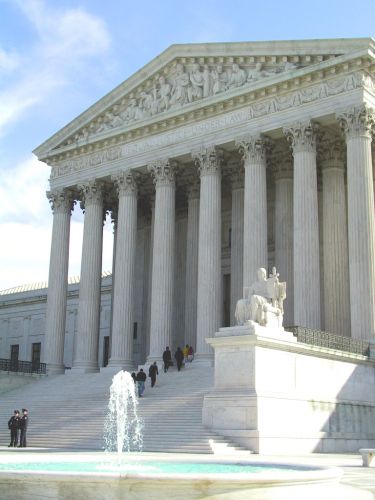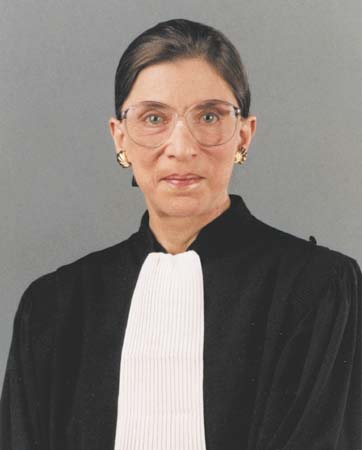 In a 5-4 ruling earlier this week, the Supreme Court upheld the federal Partial-Birth Abortion Ban Act. The mainstream media are known for struggling with abortion coverage.
Most reporters chose to portray the ruling in the language you might hear from those who advocate for abortion, rather than more neutral language or the language you might hear from those who oppose abortion. By that I mean that we were told the ruling was a loss of rights for women or abortionists rather than an expansion of protections for unborn children or the mothers who carry them. The write-ups also followed the lead of those who oppose abortion in shying away from the use of the term "partial-birth abortion" -- although the very law the court upheld used the term.
In a 5-4 ruling earlier this week, the Supreme Court upheld the federal Partial-Birth Abortion Ban Act. The mainstream media are known for struggling with abortion coverage.
Most reporters chose to portray the ruling in the language you might hear from those who advocate for abortion, rather than more neutral language or the language you might hear from those who oppose abortion. By that I mean that we were told the ruling was a loss of rights for women or abortionists rather than an expansion of protections for unborn children or the mothers who carry them. The write-ups also followed the lead of those who oppose abortion in shying away from the use of the term "partial-birth abortion" -- although the very law the court upheld used the term.
I'm not arguing that the medical term isn't "intact dilation and extraction" (so called because the child is removed from the womb via the cervix and then killed). Such bias against the language and rhetoric of abortion opponents is so expected these days that it's almost become the norm, but we should remain diligent. The issue won't stop being contentious, so reporters should redouble their efforts at neutrality.
With that, let's look at Agence France Presse's write-up by Fanny Carrier:
The US Supreme Court backtracked on abortion rights for the first time in more than a generation Wednesday, upholding a federal law restricting access to a rare but controversial late-term abortion procedure.
The bellwether ruling is a major victory for conservative forces in the United States, which have battled for decades to reverse the landmark 1973 Roe vs. Wade law establishing a woman's legal right to terminate an unwanted pregnancy.
Steadfast avoidance of descriptive terms such as "partial-birth abortion"? Got it. Scare words and phrases? Got it. The language is clear.
But these paragraphs wouldn't tell you, for instance, that a strong majority of Americans -- including some of those who generally support abortion -- wanted a ban on this procedure. The paragraphs don't mention that a majority of Americans -- including some of those who support abortion generally -- support restrictions on abortion. The reporter also just flat out liesmisstates the truth. Here:
The controversial late-term abortion -- only carried out when the fetus poses a danger to the mother's health -- was banned by the US Congress in 2003, after lawmakers concluded it was not medically necessary.
That's simply not true. Not much else to say. There is no basis in reality for such a statement.
But let's get to the big fish. Somehow The New York Times' editors permitted Linda Greenhouse to cover this decision even though it was just under a year ago that she was completely compromised -- again -- on abortion coverage. She may not march anymore in abortion-rights rallies as she has previously done, but she gave a speech last year at Harvard where she said:
The government supported "a sustained assault on women's reproductive freedom and the hijacking of public policy by religious fundamentalism."
Greenhouse said such extreme rhetoric was not opinion in any way but "statements of fact" that would be allowed to appear in a Times news article. With that, let's see how Linda "I am the Alpha and Omega of All Things Factual" Greenhouse covered an issue in which her "factual" views were disputed by none other than the majority of the United States Supreme Court she is assigned to cover.
The headline steadfastly avoided any descriptive words: "Justices Back Ban on Method of Abortion." Thank you, copy editors, for that headline that tells readers as little as possible about what the Supreme Court did and is framed as much as possible in favor of the abortion rights perspective. Greenhouse doesn't mention the widespread public support for a ban on the procedure but says it was a victory for George Bush and the anti-abortion movement. She says their opposition to the procedure was not based in their moral opposition to a particularly inhumane abortion procedure but, rather, a strategy for political victory. I think she undersells -- by not mentioning it -- the basic opposition to the procedure on human rights grounds:
By identifying the intact procedure and giving it the provocative label "partial-birth abortion," the movement turned the public focus of the abortion debate from the rights of women to the fate of fetuses.
 Note that the procedure -- in which the fetus' brains are sucked out in order to collapse the skull -- isn't provocative. The label is. Greenhouse also gives so much time and placement -- dare I call it strategic? -- to Justice Ruth Bader Ginsburg's dissent that you would think Ginsburg had, in fact, written a winning decision:
Note that the procedure -- in which the fetus' brains are sucked out in order to collapse the skull -- isn't provocative. The label is. Greenhouse also gives so much time and placement -- dare I call it strategic? -- to Justice Ruth Bader Ginsburg's dissent that you would think Ginsburg had, in fact, written a winning decision:
The court did not explicitly overturn any of its precedents, although Justice Ruth Bader Ginsburg, writing for the four dissenters, said the decision was "so at odds with our jurisprudence" that it "should not have staying power." Justice Ginsburg called the decision "alarming" and said the majority's "hostility" to the right to abortion was "not concealed."
Justices John Paul Stevens, David H. Souter and Stephen G. Breyer signed Justice Ginsburg's opinion, portions of which she read from the bench at a slow pace that caused every syllable to resonate.
Oh come on. Those last few words are embarrassing. Not surprising coming from a reporter who said what she did at Harvard last year but embarrassing for a professional nonetheless. In another case she gives a four-paragraph Ginsburg rebuttal to a somewhat non-representative Kennedy argument on how the ruling benefits women and upholds motherhood.
I wonder which opinion Greenhouse enjoyed more. Do Justice Antonin Scalia's scathing and entertaining dissents get this much time in Greenhouse articles?
Finally, the Los Angeles Times' piece by David Savage is also worth mentioning. It suffered from some of the same problems, too, but here's the snippet that concerned me:
Kennedy's opinion acknowledged that some nationally recognized medical experts testified that the ban on D&X could "create significant health risks" for some women who undergo midterm abortions.
But that alone is not enough to void the law, Kennedy concluded.
Savage completely neglects to mention that other doctors disagree that the ban creates health risks. In fact, Kennedy addressed this in detail (PDF). To wit:
Whether the Act creates significant health risks for women has been a contested factual question. The evidence presented in the trial courts and before Congress demonstrates both sides have medical support for their position. . . .
There is documented medical disagreement whether the Act's prohibition would ever impose significant health risks on women. . . .
The medical uncertainty over whether the Act's prohibition creates significant health risks provides a sufficient basis to conclude in this facial attack that the Act does not impose an undue burden.
Savage manipulates the argument by presenting only one side of the issue and, indeed, only one side of the very opinion he was tasked to cover. And apparently this is part of a pattern.
Okay, reporters, I know it's hard to put personal views aside, but we simply must cover this issue better.
